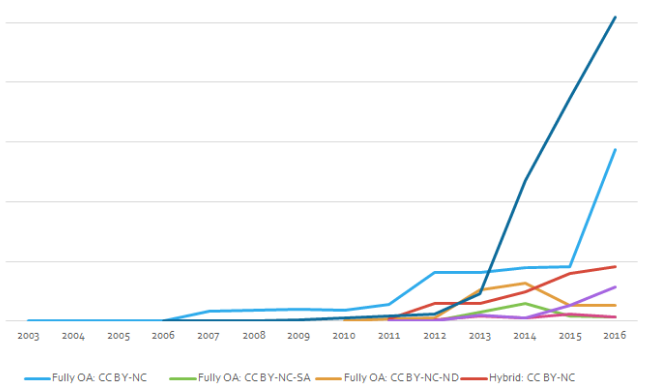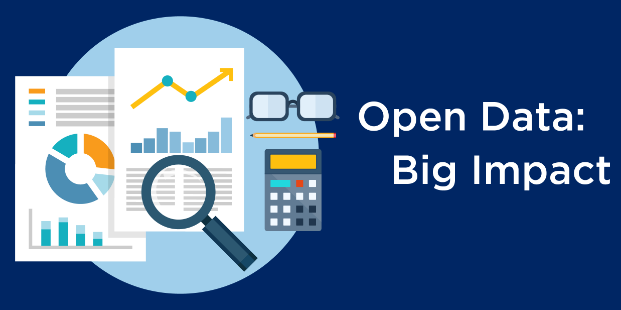
Springer Nature pioneers charitable incentive system for peer reviewers
Peer reviewers are enabling people in developing countries to access safe drinking water as the result of a collaboration between Springer’s journal Environmental Earth Sciences and the non-profit humanitarian organization “Filter of Hope”. Since the start of the initiative at the beginning of 2017, almost 600 water filters have been distributed in Liberia, Nicaragua, Haiti, Honduras, Russia, Cuba and India. This scheme is the first of its kind to acknowledge the fundamental contribution of peer reviewers in the scientific publishing industry through a non-profit partnership.
When a reviewer completes a peer review for Environmental Earth Sciences, it is tracked in the manuscript submission system so that it corresponds to a donation made by Springer Nature to Filter of Hope. The reviewer can also choose whether they would like to be acknowledged for their review in a special Editorial to the journal which is published at the end of the year.
“Filter of Hope – Clean Water for Life” is a non-profit organization that serves people in over 40 countries. Their goal is to change the world through the distribution of highly effective and affordable water filters. The water filters remove bacteria, protozoa and microorganisms from contaminated water sources, making it completely safe to drink. The work of Filter of Hope depends on global distribution organizations and funding partners that include foundations, corporations, philanthropic families, schools, churches, humanitarian groups and young people all across the world. Read Full Text on Springer

German universities have coped “easily” when cut off from Elsevier journals and do not need to rely on pirate article-sharing sites such as Sci-Hub, according to a negotiator from Germany’s biggest network of research centres.
Martin Köhler, who has helped to lead negotiations between the Dutch publishing giant and the Helmholtz Association, gave Times Higher Education details of Germany’s strategy to survive “no deal” with Elsevier – shedding some light on whether other countries could take a similar stance.
A consortium of all German research organisations is locked in hostile and so far unsuccessful contract negotiations with Elsevier, demanding full open access for German-authored papers and a model in which they pay per article published, not a flat journal subscription fee.
Part of their strategy is to demonstrate that German academics can operate without Elsevier subscriptions, and an increasing number of institutions have said they will not renew their contracts at the end of the year, now including the vast majority of Helmholtz centres, which have a combined revenue of €4.38 billion (£4 billion).

Study shows that Open Access On the Rise
Open-access papers are more popular in the scholarly literature than they’ve ever been, and this trend shows no signs of abating, according to a study of hundreds of thousands of papers published in journals spanning disciplines from physics and astronomy to chemistry and social science. The sprawling study, published this week (August 2) in PeerJ, found that 28 percent of the total scholarly literature is open access, and in 2015 (the most recent year with data complete enough to analyze), 45 percent of papers were open access.
By analyzing the recently unveiled web extension Unpaywall, which points users in the direction of open-access [OA] versions of papers, the authors found that nearly half of a sample of 100,000 papers users searched for in June were open-access. Information scientist and coauthor Jason Priem, cofounder of Impactstory, the nonprofit that spun out the open-source data platform OADOI, which powers Unpaywall, spoke with The Scientist about the study and its implications. Read full article on the Scientist

The modern era is marked by growing faith in the power of data. “Big data”, “open data”, and “evidence-based decision-making” have become buzzwords, touted as solutions to the world’s most complex and persistent problems, from corruption and famine to the refugee crisis.
While perhaps most pronounced in higher income countries, this trend is now emerging globally. In Africa, Latin America, Asia and beyond, hopes are high that access to data can help developing economies by increasing transparency, fostering sustainable development, building climate resiliency and the like.
This is an exciting prospect, but can opening up data actually make a difference in people’s lives?
Getting data-driven about data
The GovLab at New York University spent the last year trying to answer that question.
In partnership with the U.S. Agency for International Development (USAID), the non-profit FHI 360 and the World Wide Web Foundation, we scoured the evidence about what roles open data, particularly government data, can play in developing countries.
The results of our 12 in-depth case studies from around the world are now out. The report Open Data in Developing Economies: Toward Building an Evidence Base on What Works and How offers a hard look at the results of open data projects from the developing world.
Our conclusion: the enthusiasm is justified – as long as it’s tempered with a good measure of realism, too. Here are our six major takeaways: Read full article on the Conversation

A research team led by scientists at UC San Francisco has developed a computational method to systematically probe massive amounts of open-access data to discover new ways to use drugs, including some that have already been approved for other uses.
The method enables scientists to bypass the usual experiments in biological specimens and to instead do computational analyses, using open-access data to match FDA-approved drugs and other existing compounds to the molecular fingerprints of diseases like cancer. The specificity of the links between these drugs and the diseases they are predicted to be able to treat holds the potential to target drugs in ways that minimize side effects, overcome resistance and reveal more clearly how both the drugs and the diseases are working.
“This points toward a day when doctors may treat their patients with drugs that have been individually tailored to the idiosyncracies of their own disease,” said first author Bin Chen, assistant professor with the Institute for Computational Health Sciences (ICHS) and the Department of Pediatrics at UCSF.
In a paper published online on July 12, 2017, in Nature Communications, the UCSF team used the method to identify four drugs with cancer-fighting potential, demonstrating that one of them—an FDA-approved drug called pyrvinium pamoate, which is used to treat pinworms—could shrink hepatocellular carcinoma, a type of liver cancer, in mice. This cancer, which is associated with underlying liver disease and cirrhosis, is the second-largest cause of cancer deaths around the world—with a very high incidence in China—yet it has no effective treatment.
Read full article on University of California San Francisco

